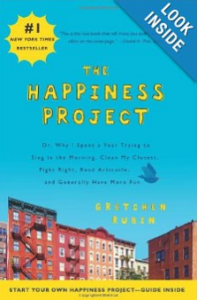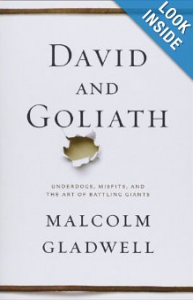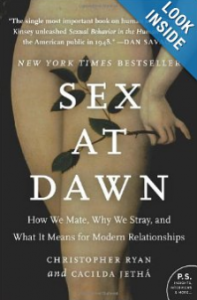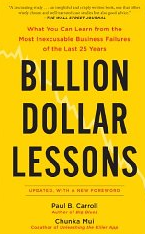I recently read “The Happiness Project” by Gretchen Rubin. Below are the quotes I found most interesting. As always, if you like the quotes, please buy the book here.
 “According to current research, in the determination of a person’s level of happiness, genetics accounts for about 50 percent; life circumstances, such as age, gender, ethnicity, marital status, income, health, occupation, and religious affiliation, account for about 10 to 20 percent; and the remainder is a product of how a person thinks and acts.” (6)
“According to current research, in the determination of a person’s level of happiness, genetics accounts for about 50 percent; life circumstances, such as age, gender, ethnicity, marital status, income, health, occupation, and religious affiliation, account for about 10 to 20 percent; and the remainder is a product of how a person thinks and acts.” (6)
“What you do every day matters more than what you do once in a while.” (11)
“I didn’t want to reject my life. I wanted to change my life without changing my life, by finding more happiness in my own kitchen.” (12)
“Studies show that by acting as if you feel more energetic, you can become more energetic.” (18)
“I benefitted from the “Hawthorne effect,” in which people being studied improve their performance, simply because of the extra attention they’re getting.” (25)
“I started to apply the “one-minute rule”;I didn’t postpone any task that could be done in less than one minute.” (33)
“The philosopher and psychologist William James explained, “Action seems to follow feeling, but really action and feeling go together, and by regulating the action, which is under the more direct control of the will, we can indirectly regulate the feeling, which is not.”” (36)
“John Gottman calls the “Four Horsemen of the Apocalypse” for their destructive role in relationships: stonewalling, defensiveness, criticism, and contempt.” (39)
“Studies show that the most common sources of conflict among couples are money, work, sex, communication, religion, children, in-laws, appreciation, and leisure activities.” (41)
“A line by G. K. Chesterton echoed in my head: “It is easy to be heavy: hard to be light” (or, as the saying goes, “Dying is easy; comedy is hard”).” (41)
“Studies show that the quality of a couple’s friendship determines, in large part, whether they feel satisfied with their marriage’s romance and passion, and nothing kills the feeling of friendship (and passion) more than nagging. Anyway, nagging doesn’t work.” (42)
“I realized that I enjoyed not feeling like a nag more than I enjoyed watching TV without licking envelopes at the same time.” (43)
“They always said,” Jamie told me, “that you have to do that kind of work for yourself. If you do it for other people, you end up wanting them to acknowledge it and to be grateful and to give you credit. If you do it for yourself, you don’t expect other people to react in a particular way.” (46)
“Gottman’s “love laboratory” research shows that how a couple fights matter more than how much they fight. Couples who fight right tackle only one difficult topic at a time, instead of indulging in arguments that cover every grievance since the first date.” (47)
“In marriage, it’s less important to have many pleasant experiences than it is to have fewer unpleasant experiences, because people have a “negativity bias”; our reactions to bad events are faster, stronger, and stickier than our reactions to good events. In fact, in practically every language, there are more concepts to describe negative emotions than positive emotions.” (48)
“It takes at least five positive marital actions to offset one critical or destructive action, so one way to strengthen a marriage is to make sure that the positive far outweighs the negative.” (48)
“Women’s idea of an intimate moment is a face-to-face conversation, while men feel close when they work or play sitting alongside someone.” (52)
“For both men and women – the most reliable predictor of not being lonely is the amount of contact with women. Time spent with men doesn’t make a difference.” (52)
“Pierre Reverdy wrote: “There is no love; there are only proofs of love.”” (55)
“In one study, people assigned to give five hugs each day for a month, aiming to hug as many different people as they could, became happier.” (56)
“When thinking about happiness in marriage, you may have an almost irresistible impulse to focus on your spouse, to emphasize how he or she should change in order to boost your happiness. But the fact is, you can’t change anyone but yourself.” (68)
“Enthusiasm is more important to mastery than innate ability, it turns out, because the single most important element in developing an expertise is your willingness to practice.” (71)
“I would take care to remind myself to remember how lucky I was to be as eager for Monday mornings as I was for Friday afternoons.” (73)
“If you do new things – visit a museum for the first time, learn a new game, travel to a new place, meet new people – you’re more apt to feel happy than people who stick to more familiar activities.” (74)
“Research shows that the more elements make up your identity, the less threatening it is when any one element is threatened.” (78)
“I wanted to develop in my natural direction. W. H. Auden articulated this tension beautifully: “Between the ages of twenty and forty we are engaged in the process of discovering who we are, which involves learning the difference between accidental limitations which it is our duty to outgrow and the necessary limitations of our nature beyond which we cannot trespass with impunity.” (79)
“Tal Ben-Shahar describes the “arrival fallacy,” the belief that when you arrive at a certain destination, you’ll be happy.” (84)
“The challenge, therefore, is to take pleasure in the “atmosphere of growth,” in the gradual progress made toward a goal, in the present.” (85)
“Studies show that the absence of feeling bad isn’t enough to make you happy; you must strive to find sources of feeling good.” (112)
“When I became a man I put away childish things, including the fear of childishness and the desire to be very grown up.” (119)
“Studies show that each common interest between people boosts the chances of a lasting relationship and also brings about a 2 percent increase in life satisfaction.” (119)
“Generous acts strengthen the bonds of friendship, and what’s more, studies show that your happiness is often boosted more by providing support to the other people than from receiving support yourself.” (145)
“Whether rich or poor, people make choices about how they spend money, and those choices can boost happiness or undermine it.” (168)
“Scrimping, saving, imagining, planning, hoping – these stages enlarge the happiness we feel.” (177)
“Pouring out ideas is better for creativity than doling them out by the teaspoon.”
“Some people associate happiness with a lack of intellectual rigor, like the man who said to Samuel Johnson, “you are a philosopher, Dr. Johnson. I have tried too in my time to be a philosopher; but, I don’t know how, cheerfulness was always breaking in.” (216)
“It takes energy, generosity, and discipline to be unfailingly lighthearted, yet everyone takes the happy person for granted. No one is careful of his feelings or tires to keep his spirits high.” (217)
“A small child typically laughs more than four hundred times each day, and an adult – seventeen times.” (259)
“Another study showed that people tend to think that someone who criticizes them is smarter than they are.” (268)
“It’s hard to find pleasure in the company of someone who finds nothing pleasing.” (269)
“Studies show that distraction is a powerful mood-altering device, and contrary to what a lot of people believe, persistently focusing on a bad mood aggravates rather than palliates it.” (274)
“The feeling of control is an essential element of happiness – a better predictor of happiness than, say, income.” (289)
Did you like the quotes? Then buy the book here.





